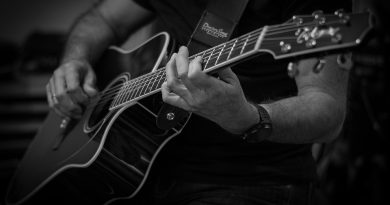Master Guitar Chords: A Beginner’s Guide
Master Guitar Chords: A Beginner’s Guide
Learning to play the guitar is a rewarding experience that can bring hours of enjoyment and creative expression. One of the first steps in mastering the guitar is to learn how to play chords. Chords are the building blocks of music and are essential for any guitarist to know. In this beginner’s guide, we will explore some of the most common guitar chords and provide tips and techniques for mastering them.
What Are Guitar Chords?
Guitar chords are a group of notes played together to create harmony. They are made up of three or more notes that are played simultaneously. Chords are used in all genres of music and are an essential part of playing the guitar. There are many different types of chords, including major, minor, dominant, and diminished chords. Each type of chord has a different sound and function within a song.
Common Guitar Chords for Beginners
There are hundreds of guitar chords, but as a beginner, it is important to start with the basics. Some of the most common chords that every guitarist should know include:
– C Major: This chord is made up of the notes C, E, and G. It is one of the first chords that beginners learn and is used in countless songs.
– G Major: This chord is made up of the notes G, B, and D. It is a popular chord that is used in many rock and pop songs.
– D Major: This chord is made up of the notes D, F#, and A. It is a versatile chord that is used in a wide range of musical styles.
– A Major: This chord is made up of the notes A, C#, and E. It is a common chord that is used in country and folk music.
– E Major: This chord is made up of the notes E, G#, and B. It is a staple chord that is used in many classic rock songs.
Tips for Mastering Guitar Chords
Learning to play guitar chords takes time and practice, but with dedication and patience, anyone can master them. Here are some tips for mastering guitar chords:
1. Practice regularly: The key to mastering guitar chords is practice. Set aside time each day to practice your chords and work on transitioning between them smoothly.
2. Start slow: When learning a new chord, start by playing each note individually to ensure that you are pressing down on the strings correctly. Then, strum all of the notes together to hear how the chord sounds.
3. Use a metronome: A metronome is a great tool for practicing guitar chords. It will help you keep time and improve your timing and rhythm.
4. Experiment with different fingerings: There are multiple ways to play each chord on the guitar. Experiment with different fingerings to find the one that is most comfortable for you.
5. Practice chord progressions: Once you have mastered individual chords, practice playing them in sequences called chord progressions. This will help you become more familiar with switching between chords.
6. Play along with songs: One of the best ways to practice guitar chords is to play along with your favorite songs. This will help you improve your timing and get a feel for how chords are used in real music.
Conclusion
Mastering guitar chords is an essential skill for any guitarist. By learning the basic chords and practicing regularly, you can improve your playing and expand your musical repertoire. Remember to start slow, use a metronome, and experiment with different fingerings to find what works best for you. With dedication and practice, you can become a master of guitar chords and take your playing to the next level. Happy strumming!






